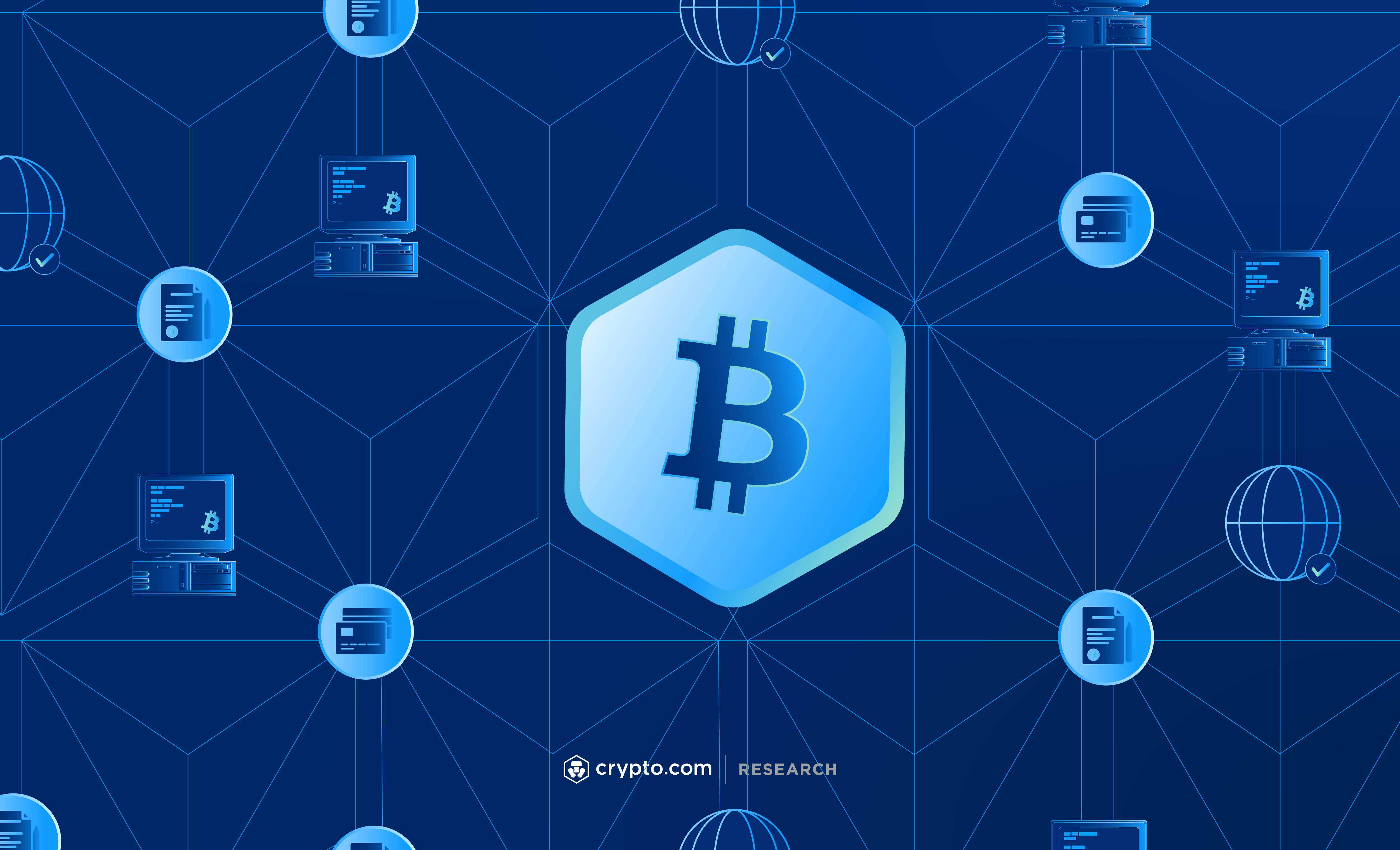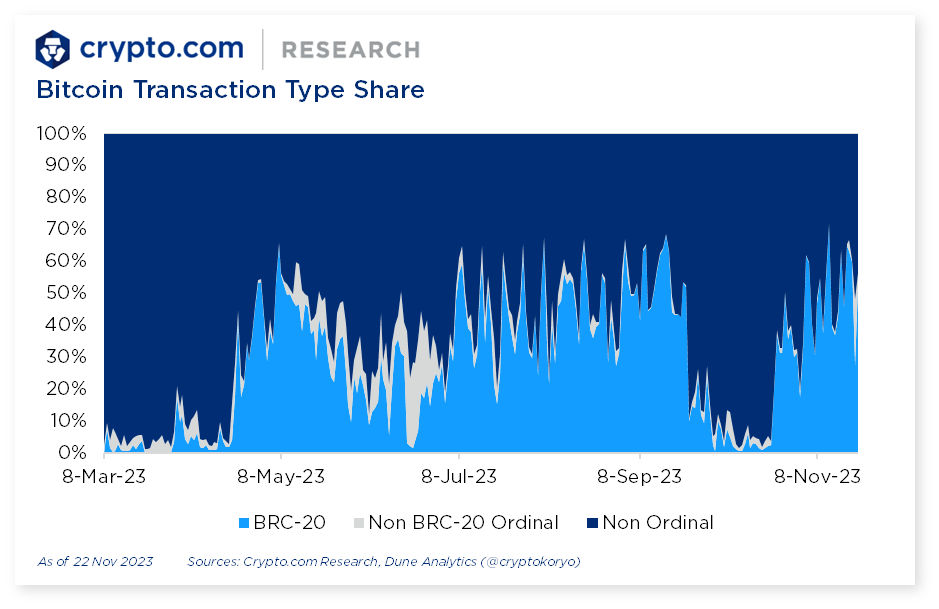
Research Disclaimer
Crypto.com Research and Insights disclaimer for research reports
Key Takeaways
- Bitcoin has several technical limitations that make it less suitable for issuing new tokens, as compared to Ethereum. These limitations are primarily rooted in the design choices and priorities of the Bitcoin network, including scripting language, lack of a native token standard, transaction throughput, and development focus.
- Additionally, Bitcoin uses unspent transaction outputs (UTXOs) to keep track of user balances rather than maintaining global account balances like Ethereum. This makes tracking and distributing token balances to addresses difficult. A UTXO represents the amount of Bitcoin remaining after a transaction has been executed.

- However, the latest innovations in the Bitcoin ecosystem aims to build upon its base layer by introducing increased programmability to expand functionality and use cases. A key area of focus is the issuance and transfer of tokenised assets on the Bitcoin network. Current notable protocols include BRC-20, Atomicals Protocol (ARC-20), Taproot Assets, and the Nostr Assets Protocol.
| Protocols | Pros | Cons |
|---|---|---|
| BRC-20 | – Simple and easy for deployment – Multiple wallets support | – UTXO “junk” proliferation, leading to network congestion and high transaction fees – No smart contract functionality – N |
| Atomicals(ARC-20) | – The tokens are backed by the same number of Satoshis, 1 token = 1 Satoshi – Supports PoW token minting (Bitwork) – No ne | – Rely on 3rd-party centralised indexer for querying and interpreting the transactions – Due to its early stage, currently the infrastructure (e.g. markets, wallets) for Atomicals is not well-developed yet |
| Taproot Assets | – Metadata is stored off-chain – Compatibility with Lightning Network – Uses Sparse Merkle Trees, which enable efficient verification processes | – Technical complexity could hinder user understanding, thus potentially limiting use of this protocol to issue assets – |
| Nostr Assets | – Designed to make use of Taproot Assets and Lightning Network, thus taking advantage of the benefits of those protocols | – Due to the technical complexity of Taproot Assets, it could similarly hinder user understanding and trust, potentially |
| Protocols | BRC-20 |
|---|---|
| Pros | – Simple and easy for deployment – Multiple wallets support |
| Cons | – UTXO “junk” proliferation, leading to network congestion and high transaction fees – No smart contract functionality – N |
| Protocols | Atomicals(ARC-20) |
| Pros | – The tokens are backed by the same number of Satoshis, 1 token = 1 Satoshi – Supports PoW token minting (Bitwork) – No ne |
| Cons | – Rely on 3rd-party centralised indexer for querying and interpreting the transactions – Due to its early stage, currently the infrastructure (e.g. markets, wallets) for Atomicals is not well-developed yet |
| Protocols | Taproot Assets |
| Pros | – Metadata is stored off-chain – Compatibility with Lightning Network – Uses Sparse Merkle Trees, which enable efficient verification processes |
| Cons | – Technical complexity could hinder user understanding, thus potentially limiting use of this protocol to issue assets – |
| Protocols | Nostr Assets |
| Pros | – Designed to make use of Taproot Assets and Lightning Network, thus taking advantage of the benefits of those protocols |
| Cons | – Due to the technical complexity of Taproot Assets, it could similarly hinder user understanding and trust, potentially |
- For example, BRC-20 tokens have surpassed a cumulative market capitalisation of over US$600 million. The cumulative number of BRC-20 transactions has also reached over 35 million. Daily transactions now make up a significant portion of total transactions on the Bitcoin network (44.6% at the time of writing).

- Other new developments include the RGB and BitVM protocols. RGB is a set of open-source protocols that enable the execution of smart contracts on a network. BitVM is a computing paradigm to express Turing-complete (a computing term for a system that can compute any possible calculation or program) Bitcoin contracts.
Check out our report Bitcoin: Beyond Store of Value, exclusive to our private members, to explore more about RGB and BitVM.
- Overall, advancements in the Bitcoin ecosystem illustrate the increasingly dynamic landscape emerging as base layer constraints inspire novel workarounds. However, adding complexity could have adverse effects on Bitcoin’s original design philosophy of emphasising security and decentralisation.
Read the full report: Issuing Tokens on the Bitcoin Network
Authors
Crypto.com Research and Insights team
Get the latest market, DeFi & NFT updates delivered to your inbox:
Be the first to hear about new insights:




